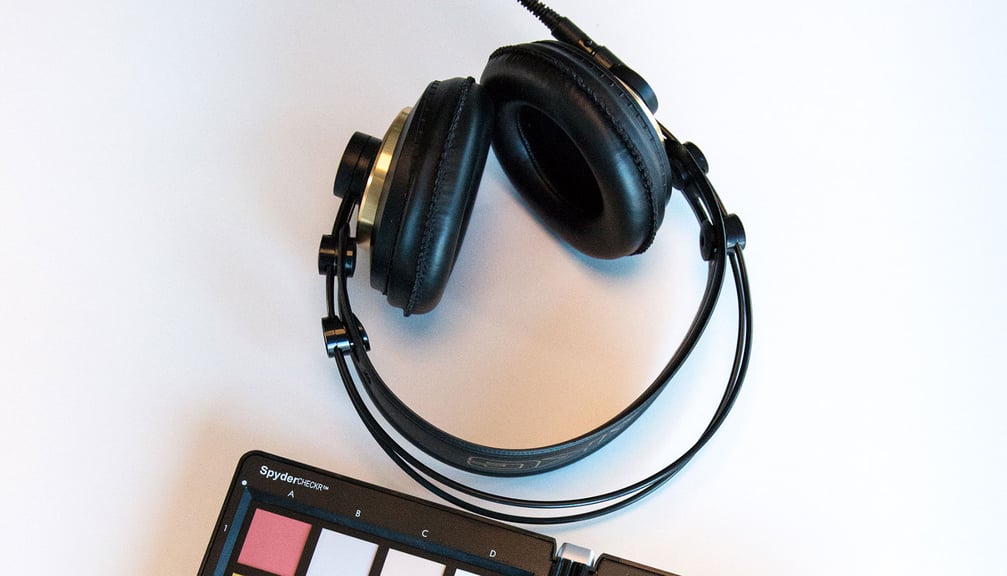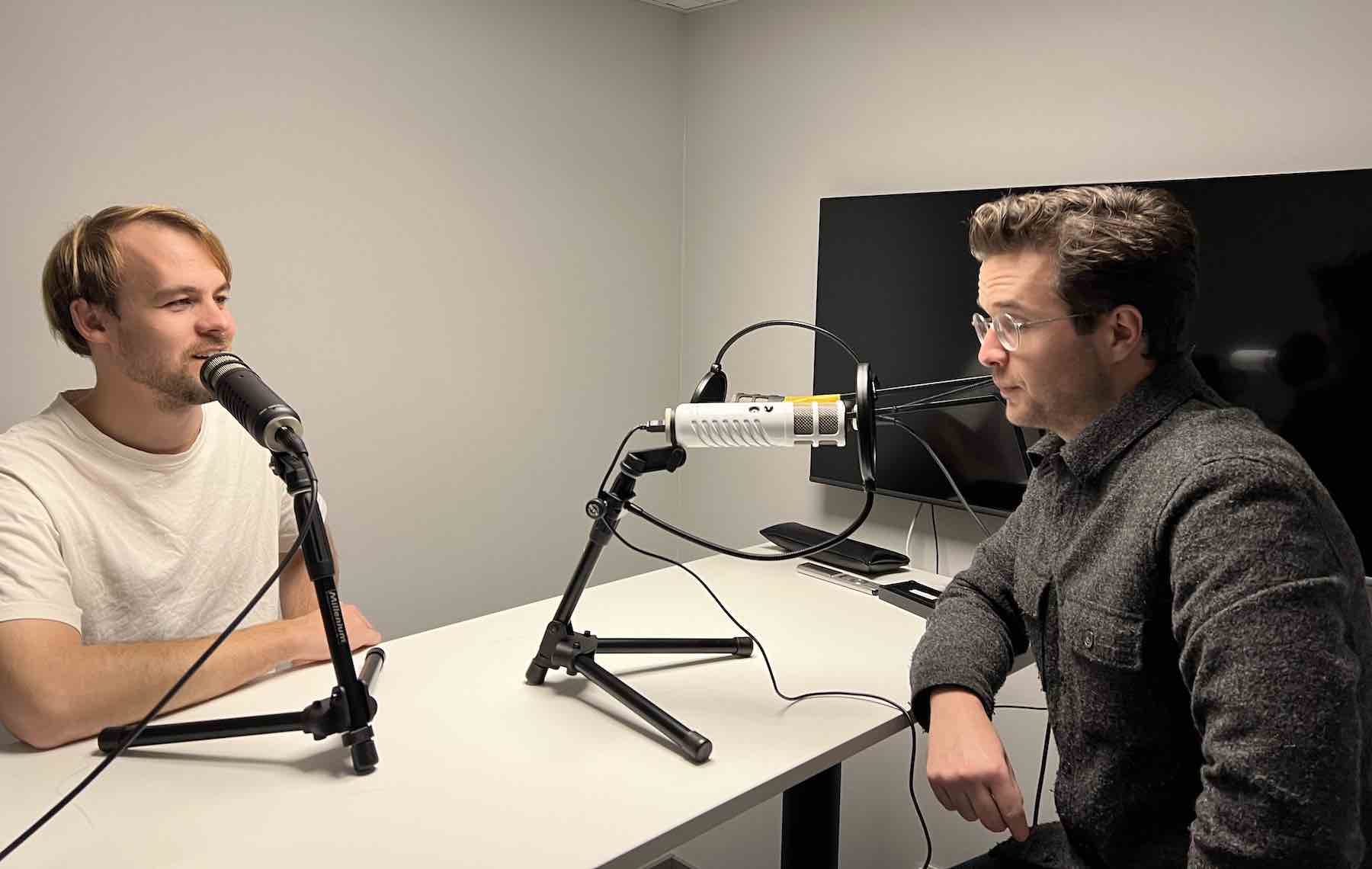- Learn
- The Onlinification Hub
- Podcast equipment for beginners: What you need to start your podcast
Podcast equipment for beginners: What you need to start your podcast

Three years ago, I knew very little about podcast equipment and editing software. But since then, I've tried lots of different solutions in the quest to improve our weekly podcast, The Onlinification Pod. Now, it's time to share my thoughts and reflections about the equipment you should consider for your podcast.
There are two critical ingredients for producing your podcast - recording and editing equipment. Once you have them, you're ready to distribute your audio to the world and repurpose it across your other content channels.
What equipment do I need to record my podcast?
The bare minimum of equipment you need to record a podcast is a microphone and a recorder. This combination could be as simple as your laptop's built in microphone and voice recorder program, or as complex as a professional-quality microphone and a separate high-end audio recorder.
However, you can get great-quality recordings with some fairly inexpensive equipment. A decent microphone and a basic audio recorder with two or three microphone inputs will get you far. Even if your podcast topics are great, people probably won't want to listen if the audio quality is too low. If you're getting started with podcasting, here's what we recommend.
Choosing a podcast microphone
Sound quality is a vital part of podcasting, so your choice of microphone is crucial. Nowadays there are a wide variety of podcast microphones on the market, which makes it possible to get good quality audio with a small budget.
XLR or USB microphone?
Some microphones have an XLR input, which is a three-pin connection that connects the microphone to a recorder through an XLR cable. The simpler but less versatile option is to use a USB microphone which plugs directly into any computer with a USB input.
The most common choice among podcast hosts and musicians is to use an XLR microphone. They typically provide better audio quality (although USB microphones are catching up in that area) and are a better option for recording sessions with multiple microphones. If you're planning on recording podcasts with several participants in the same room, it's best to use XLR microphones since you can connect all of them to the same audio recorder.
Typically, you can't have multiple USB microphones connected and recording to the same computer at the same time, so if you used USB microphones for an in-person recording session, you'd need multiple computers to record each person separately. However, if you know you'll be recording all your podcasts remotely, a USB microphone could be an acceptable solution.
At Zooma, we recording both remotely and in-person depending on who's participating, which is why we use Rode Procaster XLR microphones together with a K&M 23956 Popkiller when recording.
Choosing a podcast recorder
Along with a microphone, you also need a place to record store your audio file. Here you have several options, and what to choose is just a question of budget and ambition.
The cheapest and easiest way is to use your computer. With a USB microphone, this is a hassle-free process - you just plug the microphone into your computer's USB port and you're set. This is handy if you're going to be recording remotely, through Zoom or a dedicated podcast recording solution like Zencastr (more on that below).
If you use an XLR microphone, you'll either need a portable audio recorder to record onto, or an audio interface, which allows you to record directly to your computer. The benefit of recording with a portable audio recorder is flexibility - you can record anywhere with very little equipment, and you usually also have a number of detailed control features that boost the quality of your recording. Additionally, it's also possible to use many audio recorders as an audio interface together with your computer, which gives you the best of both worlds.
At Zooma we use the Zoom H6 digital recorder, which is considered one of the best digital recorders on the market.
Watch the podcasting webinar
Are you looking for a reason to try podcasting for yourself? Watch Alexander's on-demand webinar and find out how experimenting with podcasts can drive your whole content engine forward.
How do I edit my podcast?
Once you have recorded and stored your audio file, it's time to add the finishing touches with editing software. At Zooma we have tried several different alternatives, and here are some of our favourites:
Zencastr
Zencastr is an all-in-one podcasting platform, which makes it easy for you to remotely record and edit your audio and video recordings. In 2021 they released a vastly improved audio and video podcast editing tool which takes the manual work out of editing, I recommend you try it out if you're new to audio editing or if you want a quick and easy solution.
However, if you want to make use of these editing features, you'll also need to record your podcast in Zencastr. It's not possible (yet) to upload audio recorded elsewhere and edit it in Zencastr in the same way.
If you're planning on recording remotely, I'd say Zencastr is essential. It's possible to record through more common tools like Zoom or Teams, but someone's WiFi drops out or the connection suffers during your recording, you'll end up with these audio disturbances in your podcast. The benefit of Zencastr is that each participant's audio and video is recorded locally on their computers, and then uploaded to Zencastr once the recording is over. This means you get clean, undisturbed recordings even if the internet connection isn't that great.
Adobe Audition
Adobe Audition is a fairly advanced piece of software, and there is a bit of a learning curve. However, once you've mastered it, you'll have access to a huge range of tools that make your podcast sound great. With this software, you can create, mix and edit all kinds of audio content, and fine-tune your recording to make it as enjoyable to listen to as possible. If you're planning on doing some slightly more complex editing with your podcast, like adding jingles or intros or cutting together separate recordings into the same episode, it's best to use a tool like Audition than a quick-and-easy solution offered by tools like Zencastr.
Descript
Recently, we started experimenting with using Descript to edit podcasts, and we can confirm their bold statement - it's as easy as editing a document. You simply upload your audio file, and in no time the whole recording will be transcribed to text. The scariest, but also most impressive feature is 'Overdub'. This unique tool allows you to edit your own voice - so if you realise that you misspoke at some point during the recording, you can simply make a correction in the text and your audio recording will be updated with a digital copy of your own voice.
Do you want to start a podcast?
If you are planning to start a podcast for your company but you're not sure where to start, our 10 episode package might be something for you.
From SEK 85 000, we help you plan, record, edit, and distribute your first ten episodes. Click the button below to learn more.
Alternatively, you can learn more about the benefits of audio content in our in-depth guide to business podcasting, and get some tips on how you can launch your own show by downloading our free PDF guide to starting your company podcast below.

Learn how to start your company podcast




